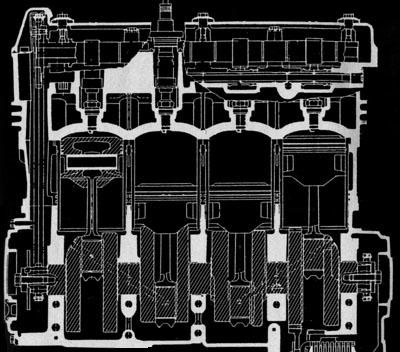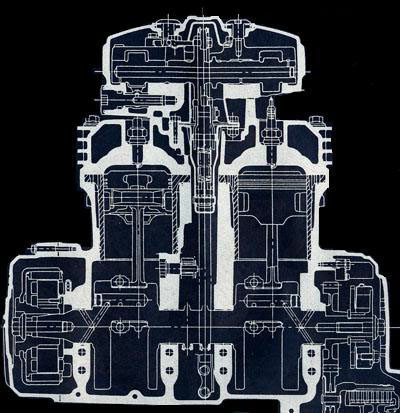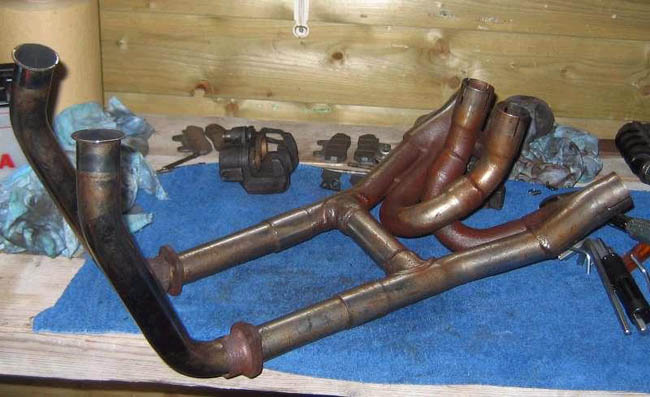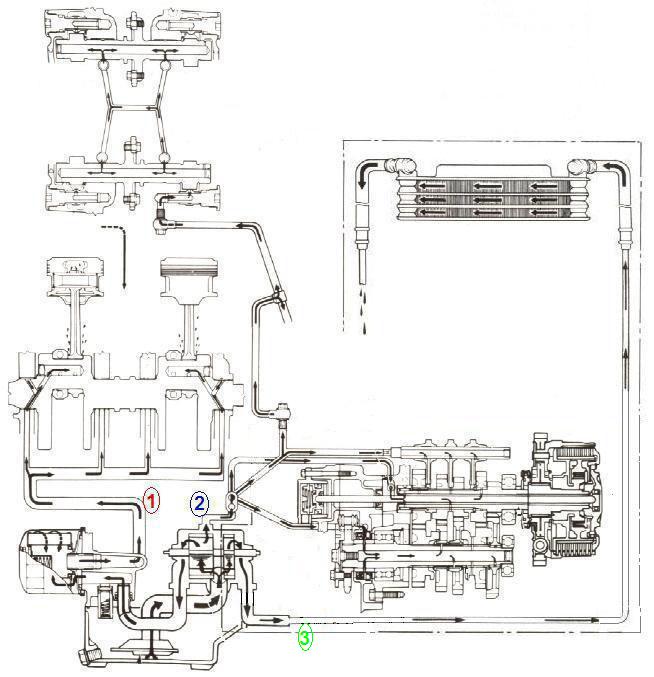Main innovation is the architecture of the
engine, in V instead of in line for the competitors.
Why a v4 ?
For commercials perspectives :
As they want to be considered as the leader of motorcycle producer, Honda
tries to propose different engine architecture. They propose the CB750
in 1969 with a 4 cylinders in line, the Gold wing (1972) with a 4 cylinder
boxer engine, the CBX with a 6 cylinder (1977), the first turbocharged
engine... So they want to be the first to propose an engine in V.
In V, because it was the architecture of the race engine in GP500, and
4 cylinders because 3 can’t stick to the image of a big motorcycle.
By presenting a V4 engine liquid cooled, Honda try to have a commercial
advantage when theirs competitors can only propose motorbike with 4 cylinders
in line, air cooled, 2 valves by cylinder (Kawa ZX, Suzuki GSXes, Yamaha
XJ).
For mechanicals advantages :
- Torque : Architecture and spark cycle influence the
torque and this allow to have a higher torque a mid RPM.
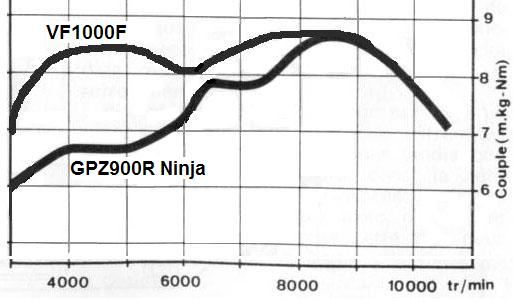
- Wideness:
On a 4 cylinders in line, the minimum wideness of the engine is done by the distance between 2 piston *4 + the wideness of the timing chain.
|
On a V4, the minimum wideness of the engine is done by the distance between 2 pistons*2 + the wideness of a connecting rod bearing + 2 time the wideness of the timing chain. |
(Pistons have the same size on theses drawing)
Even with the alternator at the end of the crankshaft, a 4 cylinders in
line is wider compare to a V4. It’s a advantage in term of front
surface (so top speed) ...
Disadvantages :
- Weight : Of course, you have more aluminum around 2
block of 2 cylinders compare to 1 block of 4. Same for the cylinder head.
You need to have 2 timing system, 4 camshafts, 2 tensioners… The
camshaft are longer in a 4 cylinders in line but as you have only 2 ,
it’s lighter.
An engine from a VF1000F weight 93,2Kg , and a 900 Ninja engine reach
85 Kg.
- Global layout : Disposition of miscellaneous is not
easy on a V4, for example:
o Carburetors : in the middle of the V, they forced to redesign the fuel
tank and, as the gas will by under the carburetors, you need a fuel pump,
so more weight, more complexity...
o Rear exhaust need to be rout between gearbox housing, frame, and swingarm.
o Water radiators : The space normally allocated to radiator is taken
by the front cylinder head. So you need an other radiator in in clow or
in the front fairing.
o Cranckase breather : On a 4 cylinders in line, when 2 pistons go down,
the 2 other pistons go up :
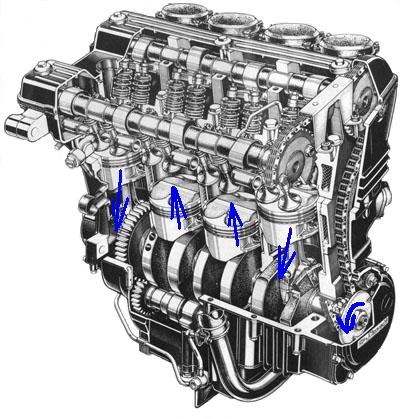 |
The air volumes inside the crankcase is the same, as the air push by 2 pistons go in the space free by the 2 other. |
.
On a 90° V4 engine, during 1/4 of a rotation, the 4 pistons go down,
and during an another 1/4 of rotation all the pistons go up.
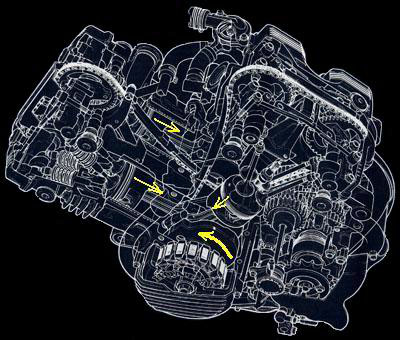 |
So, the volume in the crankcase change, and to absorb this, the breather need to be bigger. |
- Accessibility.
- Engine music, different at low RPM as the other bike,
it’s an non usual music for biker, who generally prefer the noise
of a 4 in line engine. But after 7500rpm every one agrees to like the
turbine music on the V4 engine.
Specificities of the VF engine :
Oil circuit is divided in 2 and, on the SC19 and SC20, they add a third circuit.
First one (1 en Rouge) is dedicated for crankshaft
after the oil filter. Second one (2 en bleu)
is for gear box and cylinderhead after going trough the oil filter. So
be careful if you want to buy a bike with a broken connecting rod: probably
you will find some particulate of bearing in the head.
Third one (3 en vert) is only an oil flow
through the oil radiator.
Camshaft bearing caps is in one part with holes for oil. Camshaft bearing
caps is in one part with holes for oil.
